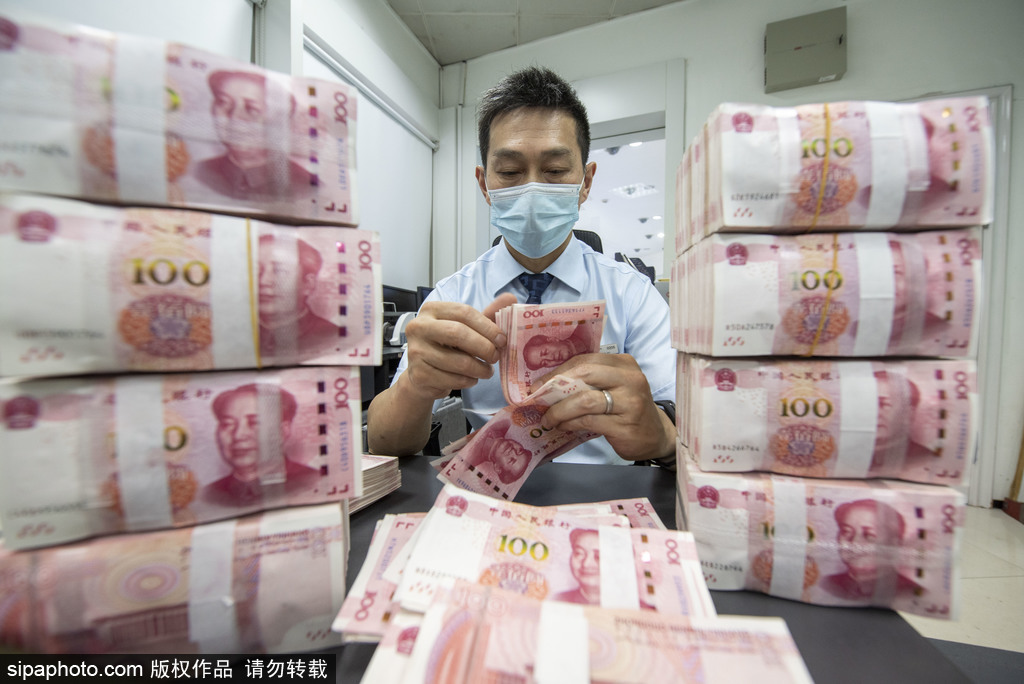
A clerk counts cash at a bank in Haian, East China's Jiangsu province, in July. Photo: Sipa
In the face of the COVID-19 pandemic, international geopolitical conflicts and other factors, China's price trend in the second half of this year deserves attention.
With the fall of international oil prices, the rising prices of pork, vegetables and other food products have become a main driver of the rise in China's consumer price index, although prices of services still stay at a low level.
Data show that China's breeding stock has increased for two consecutive months, which, together with measures such as releasing pork reserves to the market, means that even if there is some room for pork prices to rise in the second half of the year, the scope will be relatively limited.
Because of the impact of the pandemic and other factors, the service sector is still recovering and service prices are not likely to rise significantly. The momentum of consumption recovery so far is not strong and the year-on-year decline in total retail sales of consumer goods in the first half of this year is not high, meaning there is no foundation for CPI to rise substantially.
In view of this, the country needs to pay close attention to the factors that may push up prices. It should be vigilant about international energy price rise and guard against the risk of imported inflation.
China has a perfect grain reserve system, but due to abnormal weather events, the pandemic and other factors, it still needs to work ahead of schedule on grain production in the second half of this year.
China must significantly improve the expectations of market players and accelerate the recovery of supply.
For example, upstream and downstream enterprises should be guided to sign long-term supply agreements to ease the pressures of increased raw material prices on enterprises.
To stabilize prices, consumption expectations should be stabilized as soon as possible. Practical measures should be taken, such as optimizing the design of consumption coupons, combining short-term consumption stimulation with the improvement of consumption expectations, to accelerate consumption recovery.


